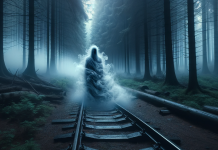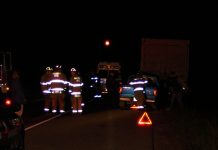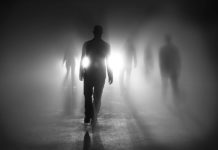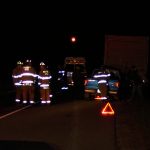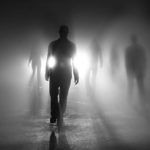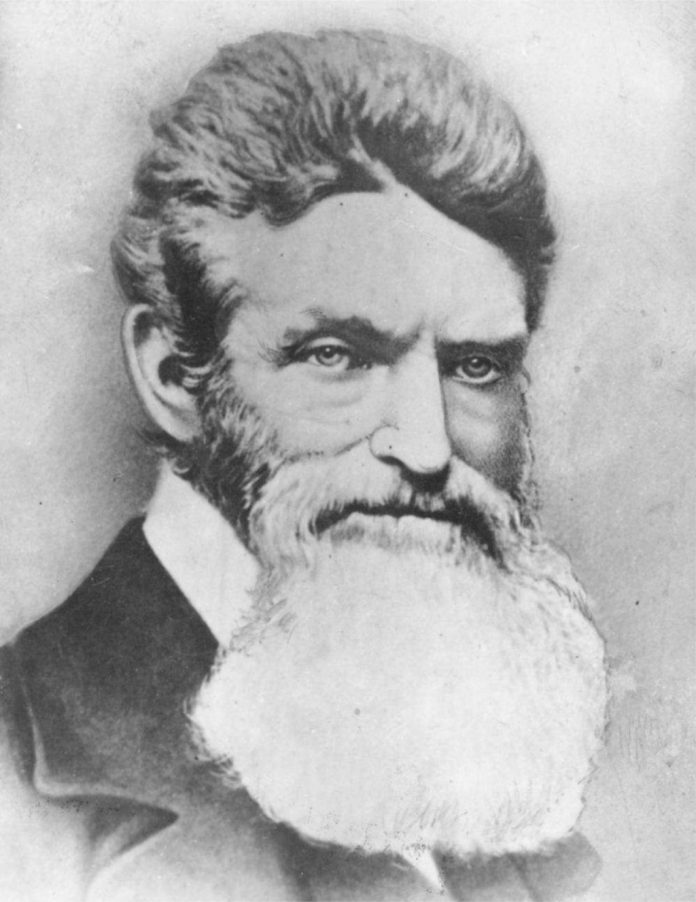
Here, before God, in the presence of these witnesses, I consecrate my life to the destruction of slavery…… John Brown, 1837. Along the streets of Harpers Ferry, West Virginia, a strange, gaunt, white-haired man walks along with a small black dog at his side. The two odd companions stroll past the storefronts and the buildings and the tourists who come here notice him and remark on his eerie resemblance to the man that made this town famous, John Brown. In fact, the resemblance is so uncanny that many will ask this man if they can take his photograph. Little do they know that when they get their film developed, no man will appear in their photograph. The man walks down the street to the door of the fire engine house, where he abruptly vanishes. Such are the encounters with the ghost of John Brown. For most of the citizens of America, the Civil War began in 1861 with the firing upon of Fort Sumpter, but for many, the war for freedom began many years before. For the abolitionists of the north and the slaves who were held in chains in the south, the Civil War was about the question of slavery. To those people, the war actually began in 1859….although for the instigator of this savage event, a man named John Brown, the war had begun much earlier than that. On October 16, 1859, the fanatical prophet of doom led a small army of five black men and thirteen white men into the village of Harpers Ferry. He brought along a wagon filled with 200 rifles, 200 pistols and 1000 pikes to arm the slaves that he was sure would rally to his cause of freedom… at any cost. He would lead his army south along the Appalachians and destroy slavery through the plantations of the south. Brown was many things in his life, from failed businessman to guerrilla leader in the Kansas Territory. When the question had come about whether or not Kansas was to have slavery, Brown had formed a personal strike force of killers to ensure that it didn’t. There was fierce fighting on both sides of the issue and towns like Lawrence suffered by being burned to the ground by pro-slavery forces and men like those in a cabin at Pottawatomie Creek were hacked to death with swords by Brown and his army of anti-slavery men. Brown became a symbol of the abolitionist movement and men who would speak out against slavery, but would not strike with the sword, railed his cause in abolitionist newspapers of the day. Brown moved east, bringing the fight to the slavery strongholds of the southern states.
At Harpers Ferry, Brown quickly seized the federal arsenal, the armory, and the engine house and then gathered up hostages from the village. After that, things started to spiral out of control. The first man killed was the town’s baggage master, a free black man. The army of slaves did not appear, but the townspeople did after Brown and his men opened fire on an incoming train. The first of Brown’s men to fall was a former slave who hoped that Brown could liberate his wife and children, still being held in the south. Someone in the crowd cut off this man’s ears as souvenirs. Before the battle was over, Brown would lose nine more men, two of them his own sons. Federal troops soon arrived from Washington and in command was Colonel Robert E. Lee, who had come so quickly with 100 men that he had not even had time to put on his uniform. A dozen of Lee’s men stormed the arsenal and fought their way inside. Brown was slashed with an officer’s sword and captured to be held by the state of Virginia for treason. He was hanged on December 2. No one had any idea what an effect Brown’s attack on Harpers Ferry would have on the northern public. Those who opposed slavery spoke out in anger and marveled at the courage shown by Brown. Herman Melville would call him “the meteor of the war”. In the south, people were horrified by the raid and by the sympathy shown to Brown for his reckless actions. It would be one of the catalysts to the coming secession by the southern states. As for the village of Harpers Ferry, the events of that day have left a lasting impression, from the ghost of John Brown to the memories and the history of those who fell and those who won the day. I, John Brown, am now quite certain that the crimes of this guilty land will never be purged away but with blood… John Brown’s final public statement But John Brown’s ghost is not the only spirit to linger in Harpers Ferry… there are other ghosts here too, like that of one of Brown’s murdered men, who was mutilated by townsfolk and left to die with the hogs. There is also a haunted church, which was hit by a mortar round during the Civil War. This building is haunted by a priest who has been seen disappearing into the walls and by the sound of a baby crying, which can be heard on the front steps.
True West Virginia Ghost Stories eBook
Our complete story collection is now available as an 880 page digital ebook that you can download to your computer or mobile device. After downloading your copy of the ebook, you can read it anywhere without needing an internet connection.
... or feel free to make a contribution.

